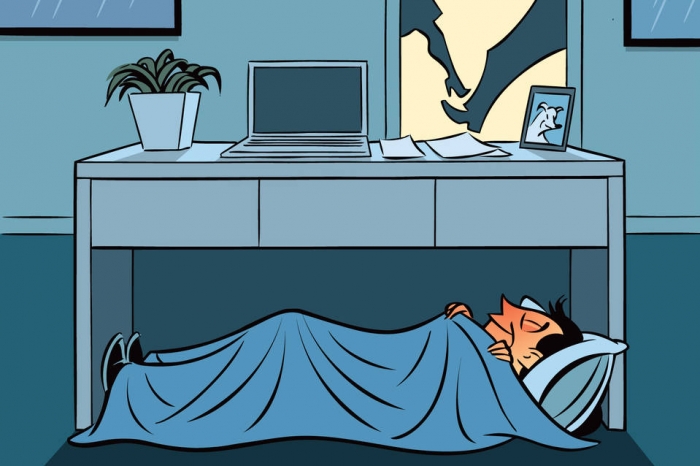Two Kinds of Naps
Dr. Dinges, who is also a member of the American Academy of Sleep Medicine, says that naps actually come in two forms: voluntary and involuntary. A voluntary nap, he says, is where a person makes a conscious decision to catch some relief before continuing her day.
“Those are naps that fill in additional sleep needs, and they have many health benefits,” he says. Involuntary naps, often the kind that happen when you’re caught napping, are considered to be a mark of someone who lacks the fortitude to stay awake. Dr. Dinges calls voluntary, or intentional, sleep the best way to fill up a person’s “sleep tank.”
“So if you live on a schedule where you only get six hours of sleep a night and you get 45 minutes of intentional naps a day, you don’t develop much of a sleep debt,” he says. Doctors recommend that adults get at least seven hours of sleep in a 24-hour period.
You’re Getting Sleepy…
Studies have shown that work hours and commute times are the two largest sources of sleep debt for Americans, Dr. Dinges says. This is why when sleep-deprived people get on the train or bus to commute home, they frequently doze off. The first sign of falling asleep is that the muscles relax. “First go the arms, then the hands, then the eyelids,” says Dr. Dinges, whose book, “Sleep and Alertness: Chronobiological, Behavioral and Medical Aspects of Napping,” dives deep into the science of siestas. “Next goes the neck, so your head falls over.”
That triggers the part of your brain that feels you’re falling, which wakes you up. These involuntary sleep attacks don’t provide much benefit, because “the brain doesn’t progress into sleep far enough for recovery, so it’s more like a disturbed night of sleep,” Dr. Dinges says. One way to prevent them is to drink caffeine, a natural stimulant that aids in alertness. The better way is to set yourself up for a proper, preventive nap.
A Window of Opportunity
Humans are biologically programmed to sleep at night, and to take a nap in the midafternoon, though scientists aren’t sure why. “There is no melatonin triggering the sleep, it just seems to be this harmonic phenomenon,” Dr. Dinges says. The consensus among his colleagues, he says, is that human civilization evolved mostly in equatorial climates, where it got very hot later in the day, and napping during the extreme heat optimized work performance.
To make the most of this biological need, don’t overthink it. Find a cool, dark, quiet place to lie down or put your head down. And put all your electronics away. The light from screens can mess with your ability to fall asleep.
A napper has to feel safe, which is why napping in public (or in a glass-walled office) is often less than ideal. “Set an alarm so you don’t oversleep” more than 15 to 60 minutes so as not to affect nighttime sleep. To alleviate the post-nap sleep inertia, have a cup of coffee.
Even a 15-minute nap is enough to relieve some sleep pressure, since the brain goes into light non-REM sleep, which contributes to recovery. “Being awake is like carrying a bag on your back. The longer you’re awake, the more bricks you add,” he says. “And when you take a nap, you remove some of those bricks.”
More about: #afternoonnap
















































